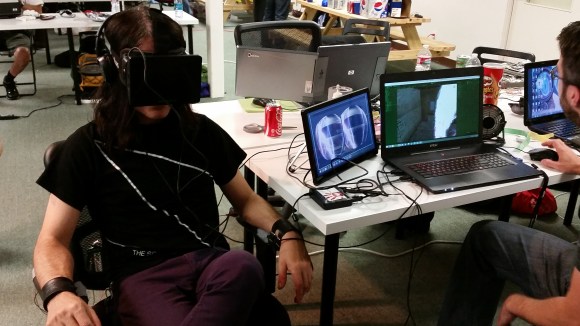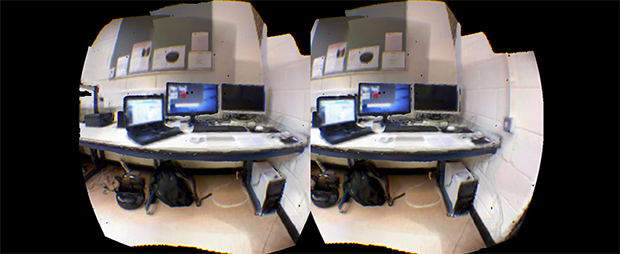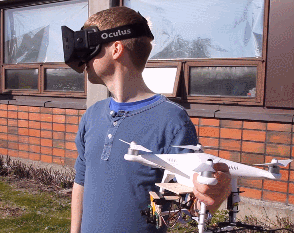
On June 26th, 2014, Clearpath Robotics opened up the doors to their brand new 12,000 square foot robot lair by bringing out a PR2 to cut the ceremonial ribbon and welcome everyone inside. And instead of just programming the ‘locate and destroy’ ribbon sequence, the co-founders opted to use an Oculus Rift to control the robot tearing through the material with flailing arms.
This was accomplished having Jake, the robot, utilize a Kinect 2.0 that fed skeleton tracking data via rosserial_windows, a windows-based set of extension for the Robot Operating System which we heard about in January. The software gathers in a stream of data points each with an X,Y,Z component allowing [Jake] to find himself within a 3D space.Then, the data was collected and published directly into the PR2’s brain. Inject a little python code, and the creature was able to route directions in order to move it’s arms.
Thus, by simply stepping in front of the Kinect 2.0, and putting on the Oculus Rift headset, anyone could teleoperate [Jake] to move around and wave its arms at oncoming ribbons. Once completed, [Jake] would leave the scene, journeying back into the newly created robot lair leaving pieces of nylon and polyester everywhere.
An earlier (un-smoothed) version of the full system can be seen after the break:
Continue reading “Cutting Ribbons With Robots And A Oculus Rift”


 We’re pretty sure the Hackaday demographic is a a person who sees a giant tower crane lifting beams and girders above a skyline and says, “that would be fun, at least until I have to go to the bathroom.” Realizing the people who own these cranes probably won’t let any regular joe off the street into the cabin, [Thomas] and [screen Name] (see, this is why we have brackets, kids)
We’re pretty sure the Hackaday demographic is a a person who sees a giant tower crane lifting beams and girders above a skyline and says, “that would be fun, at least until I have to go to the bathroom.” Realizing the people who own these cranes probably won’t let any regular joe off the street into the cabin, [Thomas] and [screen Name] (see, this is why we have brackets, kids) 












